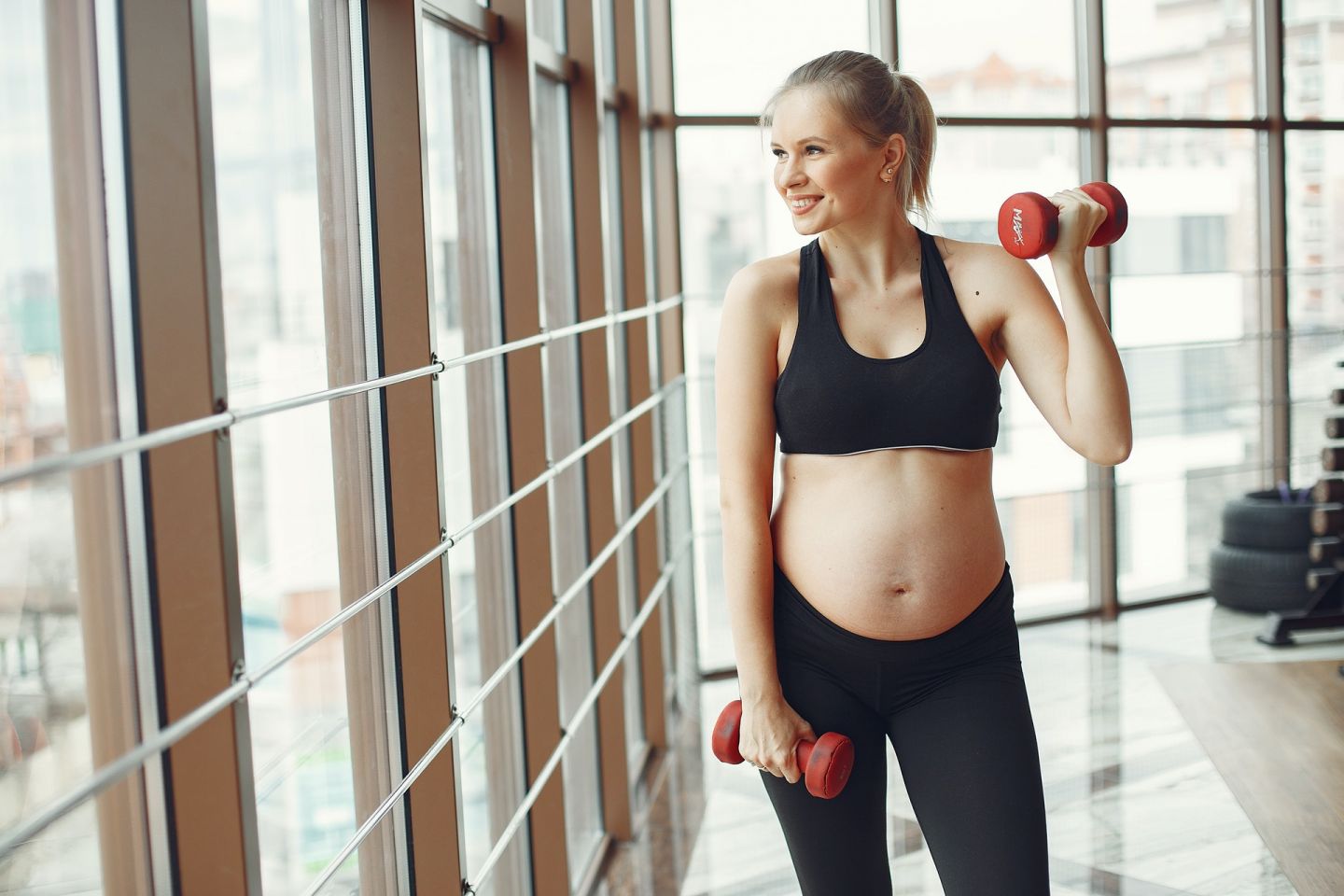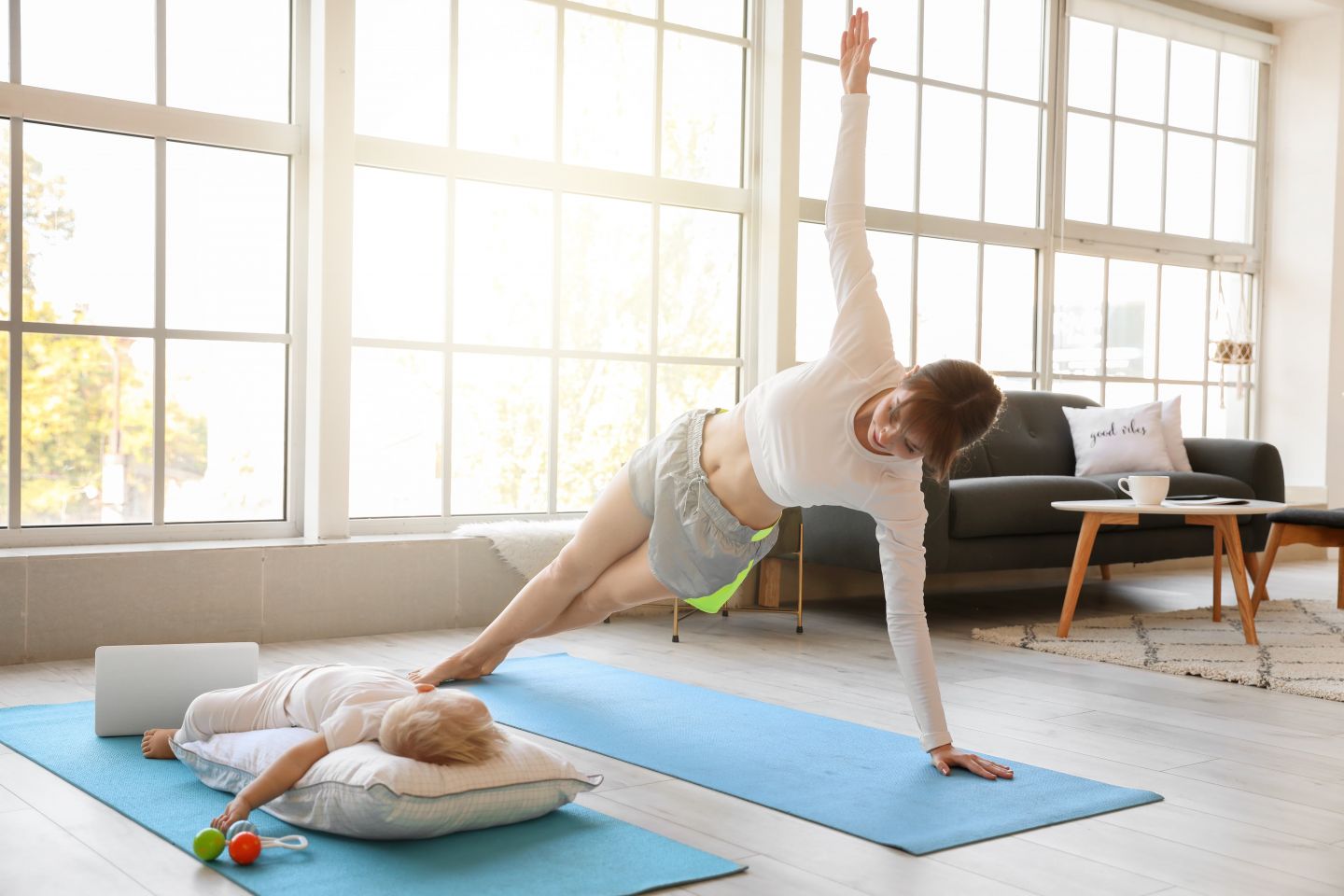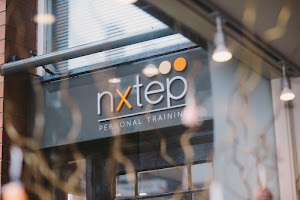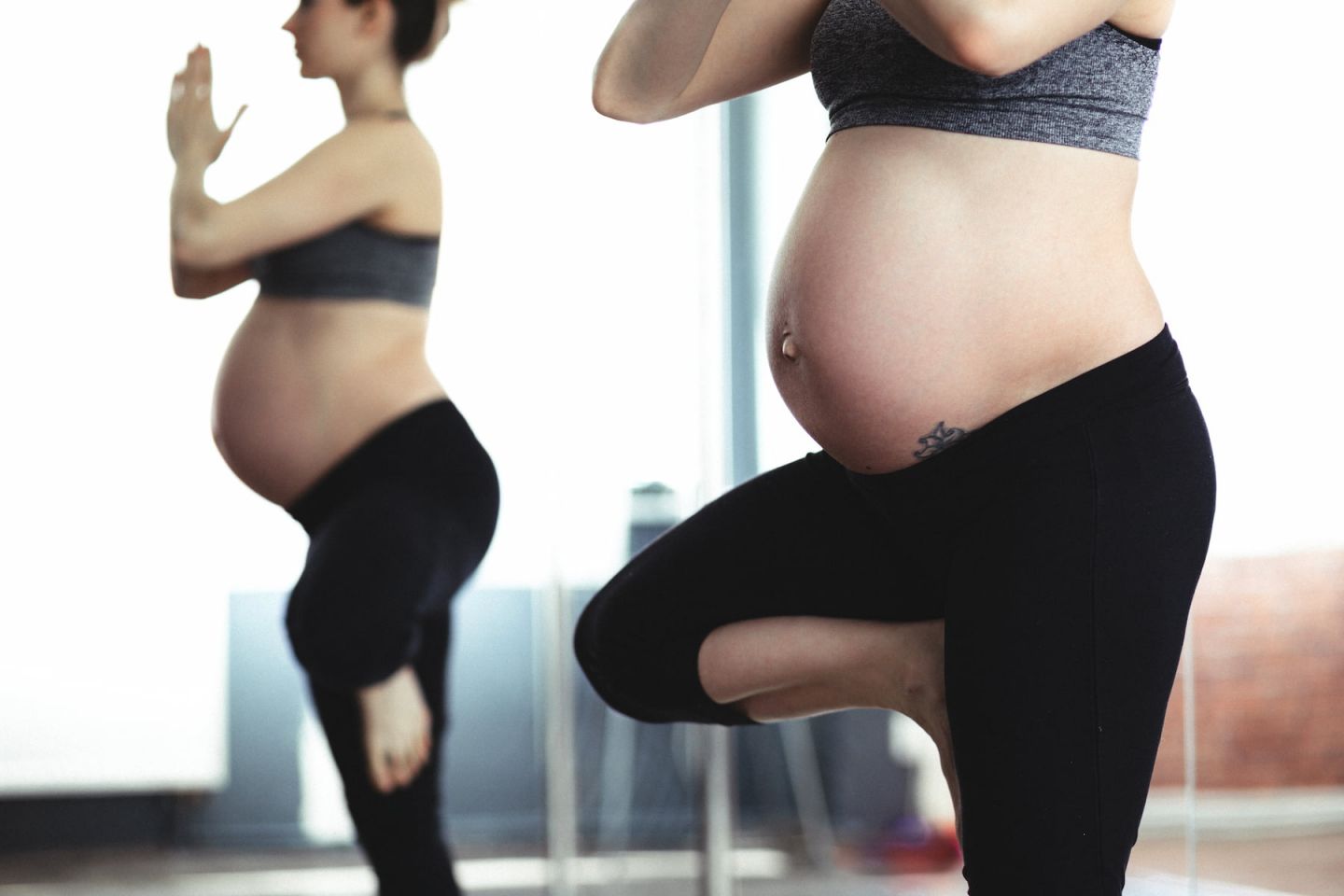About Pregnancy Personal Training
Our prenetal and postnatal personal training packages are designed to give you everything you need to safely remain active during pregnancy, prepare your body for childbirth and feel confident again post-birth. But the training will be different pre-and post birth, which I’ll explain below.
What Is Prenatal Personal Training?
During pregnancy, many changes occur to your body during pregnancy as it adapts and provides your baby with everything they need. Hormones begin to flood your bloodstream from the first weeks, to prepare you and your baby for birth. Due to this (and many other things) pregnancy can feel overwhelming – but eating healthily and exercising will not only help you maintain a healthy weight and a good level of fitness, but it will also produce endorphins (AKA the happy hormone), making you feel better about yourself and life in general, which can only be a good thing for your wellbeing and your baby’s health.
Your personal trainers are available to work with you during each and every stage of pregnancy to ensure that you are exercising safely both for you and your baby.
We can start your pre-natal training program whenever it is convenient for you. The degree of intensity will be determined by a variety of criteria, including:
- Your current fitness level
- Your fitness level before your pregnancy
- Your lifestyle and amount of free time
- Your medical history
Your initial consultation will cover all of the above, which will then be used to create a training regime for you.

What does prenatal fitness training involve?
Using functional training and strength exercises, we will work with you throughout your training sessions to tone and strengthen areas that may become weaker during pregnancy, such as your core, pelvic floor, hips and your glutes. We’ll also look at your eating habits and make any necessary adjustments to improve your health. Weight loss may be a goal for some, but it must be done cautiously during pregnancy to prevent affecting your baby’s growth.
Our personal trainers specialise in pregnancy fitness, so they can help you deal with any unexpected aches and pains that arise along the way, focusing on places you’ve probably never considered before, all to help you prepare for the most crucial and wonderful day of your life. Your training levels and intensity will of course change as your pregnancy progresses, but our fitness specialists will be there to advise you every step of the way.
Is it OK to exercise while pregnant?
Yes, light exercise is not harmful to your unborn child. While pregnancy is not really the time to begin marathon training, the traditional attitude that pregnant women should sit on their hands and live a static lifestyle, barely leaving the sofa, is no longer valid. It is now generally accepted that maintaining an active and healthy lifestyle throughout pregnancy has a number of positive effects on the health of both the mother and the child.
Lack of physical activity in fact, is believed to carry more risk than exercise, as it can lead to increased lower back pain and even incontinence. We advise women to maintain a regular active lifestyle and to continue performing the kind of light exercise they were doing before to becoming pregnant, such as jogging, yoga, and swimming.
If you haven’t been active before, it’s not a good idea to start doing rigorous exercises straight away; instead, our personal trainers will ease you into a more mild regimen, taking in to account your more limited range of movement now that you’re pregnant.
It is recommended to start with 15 minutes of physical activity a day at first, before aiming for around 30 minutes – depending on your existing levels of fitness.
What exercises can I do while pregnant?
During your PT sessions, our personal trainers will teach you exactly how to carry out each exercise safely and will make sure you’re training safely on the fitness equipment. It’s critical that you pay attention to avoid any potentially unsafe situations for you or the baby. For example, after your first trimester, you should avoid any high-impact cardio, and you shouldn’t perform any abdominal exercises such as stomach crunches or sit-ups, for example. After 16 weeks of pregnancy, women shouldn’t do any workouts that require you to lay flat (in what’s known as the supine position).
Pelvic floor exercises are a good idea both before and throughout pregnancy, as they will strengthen the pelvic muscles and lessen the likelihood of postpartum incontinence caused by diastasis recti (abdominal separation – also known as pelvic floor dysfunction).
Low to moderate-intensity aerobic exercise may help you maintain your cardiovascular fitness, in addition to expanding your placenta’s size and its ability to exchange nutrients, waste and oxygen with your developing baby.
Yoga is a great light exercise for pre-natal women, as it can help relieve aches and pains, improve blood flow, and the breathing techniques involved can even be utilised during labour. Although many postures are safe to do during pregnancy, some of the more dynamic inverted poses, including downward dog, should only be done in the first trimester.
It is also important to avoid any exercise which involves you holding your breath during pregnancy, as this can cause an increase in intra-abdominal pressure, which is not healthy when pregnant.
The additional weight of the uterus may exert strain on the vena cava vein, which may cause you to feel lightheaded, but it also has the potential to impede the flow of blood and nutrients to your placenta as well as to your developing child. However, this does not rule out the possibility of strengthening your core – in fact, having a strong core will assist you in giving birth.
Your personal trainer will provide you with alternate but effective exercises that will help you increase core strength in safely for you and your baby.
Exercise Tips for Pregnant Women
Focus on Primary Muscle Groups
While you’re working out, you should focus most of your attention on the primary muscle groups, as this will help you maintain both your physical health and your strength. The pelvic floor, abdominal muscles, glutes, hamstrings and upper and lower back are the areas that should be prioritised during training for both during pregnancy and after delivery. These muscle groups need to be developed at the same time in order to facilitate the development of the baby and to assist you in feeling more comfortable as your body changes during pregnancy.
Kegel Exercises are Key
You must maintain your Kegel exercises and as mentioned above, do the appropriate kinds of ab work. While it is crucial to modify your abdominal workouts while pregnant, core strength is crucial to support your body as it adjusts to the ongoing postural changes. It’s all about striking the right balance; the stomach must be both flexible and powerful enough to sustain the baby’s development.
Barre Is Your Friend
Barre is one of the most beneficial forms of exercise for expectant mothers. A true muscle challenge, it does not require any equipment, it includes a lot of atypical core activation (which is safe for pregnant women), and it is intrinsically low impact. The lower back may be stretched out and core strength can be maintained with the addition of hip motions such as circles.
Back Extensions
One more wonderful workout for pregnant ladies is a back extension that is performed while in the all-fours posture. This is another another important exercise for postnatal rehabilitation; its primary focuses are on enhancing posture, fortifying the core, and stretching the lower back. You should make this one regular part of your regimen and do it at least three times a week.
Standing Seat Exercise
Other forms of physical activity, such as standing seat work, are something that I believe to be of the utmost importance for a woman who is expecting a child. With this exercise, all of the muscular groups that support the pelvis are worked out. This helps pregnant women create balanced strength in their hamstrings, glutes, abdominals, and lower backs. This can prevent waddling, which is a common side effect of pregnancy that can be mitigated by exercises that focus on strengthening the outer hips.
What is Postnatal Personal Training?
It’s a little known fact, but postnatal actually refers to the baby, whereas the word ‘postpartum’ refers to the mother’s body after pregnancy, so at Nxtep we tend to use this word when talking about exercise after pregnancy, as of course, it is you working out, not your baby!
However, after nine months of significant physical change, your body may no longer feel like it’s even yours. While this is totally natural and normal, it can be upsetting. But the power of exercise and the motivational power of your personal trainer can help you ease you gradually into a new regime where fitness is just a part of your life, helping you look and feel like you once again.
We’ll assist you in carving out that much needed you-time in your week, and your exercise sessions will help you with recharging your batteries even on the most sleep-deprived days.
The most crucial thing to remember is that your body has just gone through a hell of a journey for the last nine months in preparation for childbirth. So, while we’ll be working hard, we’ll be doing so safely and concentrating on your key zones. We’ll improve your overall fitness by using functional training and strength strategies to help you lose baby weight while also toning and strengthening the rest of your body. We’ll also examine your dietary habits and make any required changes to boost your health. Eating correctly and exercising regularly will not only help you lose weight safely, but it will also produce endorphins (the happy hormone), which simply make you feel better.
Our post natal fitness programmes are intended to help you return to your pre-pregnancy fitness and health levels in a safe and effective manner.
Although this isn’t always the case, postpartum women who train with us typically become considerably stronger and fitter than they were before they became pregnant. However, the post-natal fitness programmes that we provide are not a quick fix, and the intensity level will go up when we feel that you are ready.
To ensure that there are no long-term difficulties as a consequence of pregnancy or childbirth, we begin with gentle exercises. We build a strong foundation by working the deeper muscle groups before moving on to other objectives like weight reduction.

What kinds of exercises will I do?
Our postnatal fitness training packages are tailored to meet the unique needs of women who have recently given birth. They include a combination of resistance, stability, cardio, and postural exercises that have been shown to assist in the reduction of excess body fat, the improvement of cardio fitness, the acceleration of metabolism, the strengthening of the lower back, and the toning of the muscles in the stomach, chest, bottom, arms, and legs.
We will begin working on the pelvic floor exercises as soon as you feel ready, as these are key in the prevention of urinal incontinence. The recovery of your pelvic muscles might take up to four months, but after this we can begin more traditional workouts like aerobics, sit-ups, and abdominal wall exercises such as crunches.
Other exercises likely to be in your postnatal personal training package include light treadmill work, weight training, Pilates, boxercise, medicine ball work and light circuit training.
FAQs
When will I get back to the size I was before I became pregnant?
Pregnancy is the most significant physical change you will ever experience. You might gain 25 to 35 pounds in a matter of months. By the time you complete your pregnancy journey, the uterus as well as its lining will have grown to 500 times their original size.
Hormones are also produced by the body, which aid in the flexibility of the joints, ligaments, tendons, and muscle fibres. The blood vessels dilate, increasing the amount of blood flowing through them by up to 50%.
Approximately 10 – 13 pounds are lost soon after delivery, but many women may still appear to be five to six months pregnant even after the baby is delivered.
Usually, another 5 to 15 pounds are then lost over the next six weeks, but it might take anything from six months to a year to shed the remaining weight, and in many cases it is not possible without exercise.
While it’s natural for postnatal women to want to get back to “normal,” now that they’re no longer pregnant, it has to be a gradual process. You’ll go from being pregnant to becoming a parent in a day, but the body’s recovery from pregnancy and childbirth can take many months.
But, after only a few weeks of training with us, you will have significantly increased levels of energy, stamina, flexibility, self-esteem, and confidence in your physical appearance. Our postnatal exercise classes can assist you with shedding baby weight, increasing your energy levels, and toning your body so that you may feel better and more easily manage the duties that come along with being a parent.
Do you provide prenatal fitness classes in a group setting?
Yes, we also offer group PT sessions for both pre and postnatal mothers. Exercising with your other new mum friends is a fantastic way to motivate yourself and each other to reach your fitness goals. It’s also beneficial for pregnant women to be around others in the same boat who understand the challenges of pregnancy, rather than simply being in a gym class surrounded by people of all ages, many of whom may never have gone through the same experience as you.
What causes postnatal back pain?
Postpartum back pain is pain in your back that lingers even after you’ve given birth to your baby. There are a number of causes, including hormonal changes and strain on abdominal muscles. It takes time for your back to return to normal, so be patient and don’t do too much too soon.
You can help alleviate your postpartum back pain by being extra careful about how you use it and doing a few simple exercises.
When lifting your baby, laundry, a stroller, or anything else, start from your knees, not your back. When you’re feeding or tending to your baby, try not to bend over as much.
If you’re recuperating after a C-section, ask your doctor whether it’s okay to take a bath, as this is great for this kind of back ache. Get a massage if you can. Alternatively, you might have your partner or a family member to massage your back at home.






















